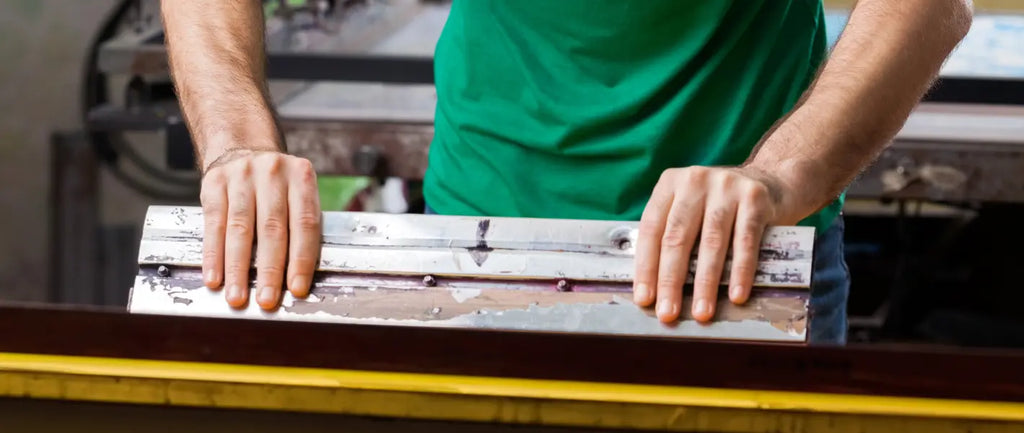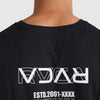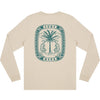How do we print the designs?

We print all of our clothes ourselves in our workshop in Utrecht. To ensure the quality of our products, we have acquired the skills to screen-printing.
What is screen-printing?
Screen-printing is a method of printing graphics on a fabric by pressing ink on top of a shirt in stead of soaking the shirt in the ink. It is the most popular method in the clothing industry due to its good washing resistance. The design of a screen-printed shirt will stay intact for years. Back in the day, it was the only way to produce bulk shirts.
How does it work?
Screen-printing is a time-consuming and complicated process, which requires patience and precisions. Do you want to know more about it? Then continue reading but don't say I didn't warn you...
The screen

There are screens of different sizes ranging from A1 to A6. It consist of a steel or wooden frame that spans thousands of small horizontal and vertical silk strings to create a permeable membrane. Depending on the fabric of the shirt you want to print on, you should choose a membrane with bigger or smaller holes. This will also impact the amount of detail your design can have, similar to the pixel-resolution of a computer-screen.
To apply your design to the screen you first need to coat the membrane with an UV-reactive emulsion. It is super important to work in a dark room without UV light when preparing the screen.
Secondly, you need to print your design on a transparent paper and place it on top of your emulsion.
Thirdly, exposing the emulsion to UV-light in a controlled environment will start a chemical process causing the emulsion to harden and become ink-proof at the transparent spot. The rest of the emulsion can be washed off afterwards leaving you with a screen that allows ink to be pressed through only at the spots that have not been exposed to UV light, ergo the design printed on the transparent paper.
The press
The press consists of three parts: the board, a lever with the attached screen

and a rubber squeegee. You firmly attach your prepared screen to the lever of the press, making sure your design is straight.
Then you stretch the shirt to be printed over the board, making sure there are no wrinkles in the fabric especially where the design will be printed.
To print the design on the shirt you lower the screen on top of the shirt. You pour the desired color of ink on the top of the screen and use the rubber squeegee to quickly and firmly move the ink from one end of the screen to the other. As the ink gets moved over the permeable parts of the screen, the ink seeps through onto the shirt and the design starts to appear.
For the ink you can create your own color by mixing different ink together or simply use primary colors.
Because sustainability is one of our core values, we are using ink that is non-toxic, vegan and adheres to the OEKO-TEX 100 standards.
One last but crucial step and the shirt is ready to wear...
The drying
To properly attach the ink to the shirt and prevent it from coming off during the first wash-cycles, the shirts need to be dried at a high temperature (180℃). We use a hand-dryer that can been set to an exact temperature to ensure the colors don't bleed.
Once the ink is dry, we inspect it and let it air-dry for another 24 hours.
The process of screen-printing requires a lot of time, endurance and precision, We have improve our process step by step in order to provide the high quality of our products.
What about the labels ?

We are proud to be one of the few companies to do all parts of our production cycle (except for producing the base-shirts) ourselves instead of delegating the printing and sewing to subcontract parties in remote parts of the world.
That's why we are making our products by sewing our Suay label on each one of our shirts, sweaters and beanies. It is really important for us to provide you the best quality product.
You can also check out our Instagram page for more pictures, videos and information about our printing and sewing-process.
Article written by Lois.






